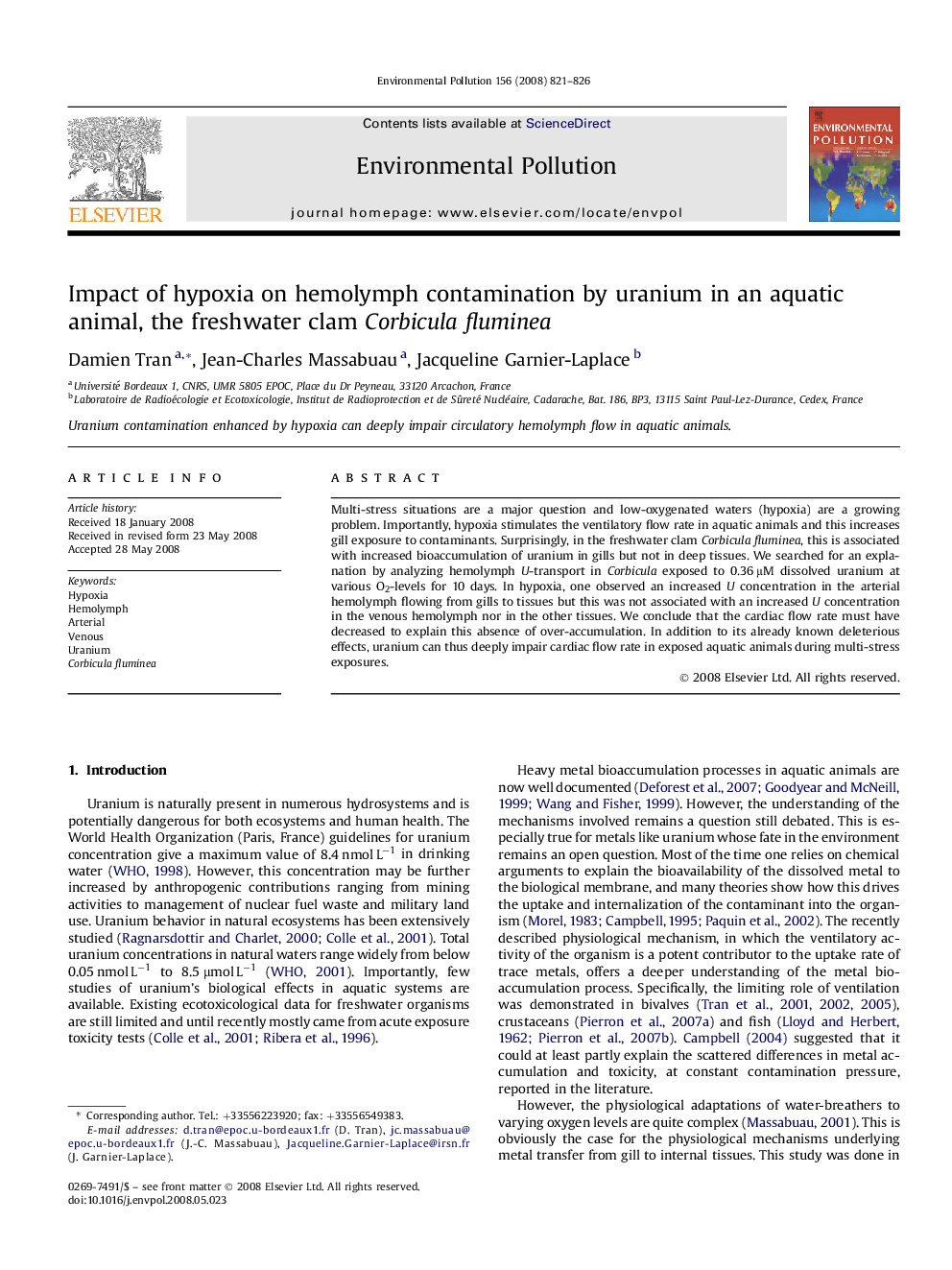| Article ID | Journal | Published Year | Pages | File Type |
|---|---|---|---|---|
| 4426216 | Environmental Pollution | 2008 | 6 Pages |
Multi-stress situations are a major question and low-oxygenated waters (hypoxia) are a growing problem. Importantly, hypoxia stimulates the ventilatory flow rate in aquatic animals and this increases gill exposure to contaminants. Surprisingly, in the freshwater clam Corbicula fluminea, this is associated with increased bioaccumulation of uranium in gills but not in deep tissues. We searched for an explanation by analyzing hemolymph U-transport in Corbicula exposed to 0.36 μM dissolved uranium at various O2-levels for 10 days. In hypoxia, one observed an increased U concentration in the arterial hemolymph flowing from gills to tissues but this was not associated with an increased U concentration in the venous hemolymph nor in the other tissues. We conclude that the cardiac flow rate must have decreased to explain this absence of over-accumulation. In addition to its already known deleterious effects, uranium can thus deeply impair cardiac flow rate in exposed aquatic animals during multi-stress exposures.
